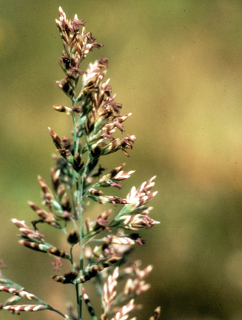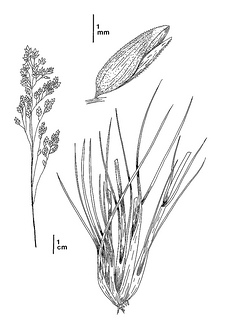(Poa napensis)
 Poa napensis. CDFW photo by Marianne McDermon.
Poa napensis. CDFW photo by Marianne McDermon.
 Poa napensis. CDFW illustration by Mary Ann Showers. (Click to enlarge)
Poa napensis. CDFW illustration by Mary Ann Showers. (Click to enlarge)
Napa blue grass is a California endangered plant species, which means that killing or possessing the plant is prohibited by the California Endangered Species Act (CESA). Napa blue grass is also listed as endangered under the federal Endangered Species Act. Napa blue grass is a perennial bunch grass that is found in wet areas that are next to and fed by hot springs and geysers, and the species is currently only found at two sites on private property near the City of Calistoga in Napa County, California. Napa blue grass co-occurs with the California threatened Calistoga popcorn-flower (Plagiobothrys strictus).
Because populations of Napa blue grass are small and only known from two locations, they are highly vulnerable to extinction. Both populations of Napa blue grass occur on private land and could be threatened with extinction from development, changes in land use, or other landowner activities. Additionally, because Napa blue grass is dependent upon water from hot springs and geysers, changes in hydrology could also impact the species. Napa blue grass is also threatened with competition from invasive species, the effects of climate change, and due to the vulnerability of small populations
Cooperation with private landowners is essential for the protection and reduction of threats to Napa blue grass populations. Additionally, Napa blue grass seeds should be collected and properly stored by qualified institutions to guard against extirpation, and populations of the species should be adequately surveyed and monitored.
CDFW may issue permits for Napa blue grass pursuant to CESA, and you can learn more about the California laws protecting Napa blue grass and other California native plants. Populations of Napa blue grass occur in CDFW’s Bay Delta Region. More information is also available from the U.S. Fish and Wildlife Service Species Profile for Napa blue grass.
Updated 06/17/2013